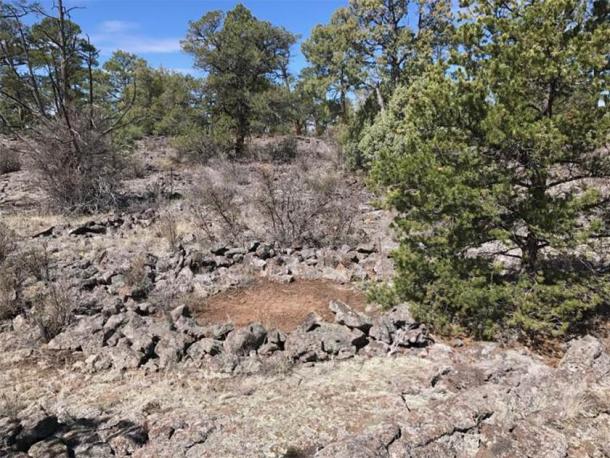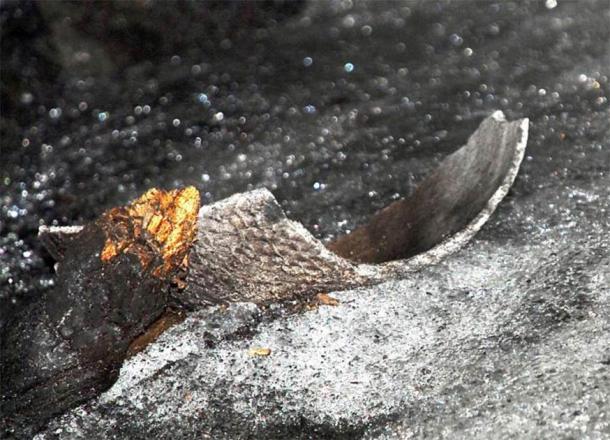Recent research has shown that the ancient Ancestral Puebloans culture, in what is today New Mexico, burned controlled fires in volcanic ice melt lava tubes to survive major droughts. El Malpais, or the “bad lands,” was the name Spanish explorers gave to the harsh arid landscapes of modern-day western New Mexico. The Ancestral Puebloans were an ancient Native American culture that lived in the present-day Four Corners region of the United States beginning from around 8,000 BC. It is known they developed entire architecture and administrative systems, but only now have their “water survival” strategies been revealed.
The team of geoscientific researchers was led by the University of South Florida , collaborating with the National Park Service , the University of Minnesota , and a research institute from Romania. While examining an “ice-packed lava tube” in the El Malpais National Monument area the researchers collected charcoals samples found there. University of South Florida USF geosciences professor, Bogdan Onac, dated the samples and discovered that the Ancestral Puebloans survived deadly droughts by living in these caves and that melted ice was their primary source of water.

Archeological site next to the cave where it is believed the Ancestral Puebloans left circle-shaped stones while out hunting, which they may have used for ceremonial purposes. ( University of South Florida )
Ancestral Puebloans Controlled Fire To Create Water
The new research is published in the journal Scientific Reports and explains that severe droughts in the American Southwest were one of the chief influences that determined the longevity of Ancestral Puebloans settlements. The evidence, dating to between 150 AD and 950 AD, suggests small fires were burned to slowly melt the ice and that smoke ventilation was controlled to enable breathing in the tunnels. According to Professor Bogdan Onac, this new discovery helps illustrate one of many human-environment interactions in the American Southwest.
The research study focused on the 800-year period when the Ancestral Puebloans accessed the packed cave ice . The lava tube is located in what is described as a “40-mile [64-km] swatch of treacherous ancient lava flows” that created tubes in which ice deposits naturally accumulated. The entrance to the cave is located at 7,217 feet (2,200 meters) above sea level and it measures 561 feet (171 meters) long, and about 46 feet (14 meters) deep. To protect the public, the National Park Service is identifying the site only as Cave 29.
How An Ancient American People Mined Deep Ice Cores
The ice block found inside the cave is thought to be the remains from a larger ice deposit that once filled most of the cave’s deepest section. Normally, the ice would have melted annually thereby leaving pools of fresh water around the cave entrance. However, in warmer and drier periods the researchers found evidence showing that the Ancestral Puebloans “repeatedly worked their way to the back of the cave to light small fires to melt the ice block and capture the water.” According to a report on ArchaeologyNewsNetwork this project was the earliest, directly-dated proof of water harvesting within the lava tubes of the American Southwest.

A Cibola Gray Ware pottery fragment discovered in the cave at El Malpais National Monument in New Mexico. ( University of South Florida )
The charcoal and ash deposits, as well as a single Cibola Gray Ware pottery shard, demonstrated that the people had harvested a core of ancient ice from the block. Professor Bogdan Onac claims to have explored many similar lava tubes, but he regards this particular one as “special,” because of the volume of charcoal discovered in the deepest parts of the cave. However, at that time climate change was forcing people to find new sustainable water resources and Onac says that under current changing climate conditions the melting cave ice is both “uncovering and threatening a fragile source of paleoenvironmental and archaeological evidence.”
The Threat Of Modern Climate Change To The Fragile Evidence
Climate change, and how much we cause it, has become a controversial subject that is now completely politicized. Today, you’re either a whole-hearted climate change believer or a denier. However, there is no denying the effects of climate change in this cave. And because of our rapidly changing modern climate the scientists are watching the cave ice melting under their noses, threatening to destroy the remaining climatological evidence.
In a race against the clock Onac said that with support from the National Science Foundation he aims to return to the lava tubes to gather as much evidence as is possible before the ice finally melts away, taking with it valuable geological and archaeological evidence.
Top image: Ice deposit in the cave at the El Malpais National Monument in New Mexico. Source: University of South Florida
By Ashley Cowie
Related posts:
Views: 0
 RSS Feed
RSS Feed

















 November 21st, 2020
November 21st, 2020  Awake Goy
Awake Goy  Posted in
Posted in  Tags:
Tags: 
















